Author: Jake Huolihan
I don’t tend to use much Crystal (aka Caramel) malt when brewing, though certain styles demand a decent portion. With various options in regards to roast level, a brewer can rather easily select a single Crystal malt that will impart both the sweet characteristics and color they so desire in their beer.
I’ve been on a mission to craft the perfect ESB and have often relied on Crystal 60 (C60) malt, which in the amounts I use comes across to me as a toasty sweet flavor with a touch of dark fruit. It’s quite nice, as is the color C60 imparts, a gorgeous amber with orange-red highlights.
There are times, however, when a particular Crystal malt like C60 isn’t available, which got me wondering if blending Crystal malts of other roast levels to achieve the same color would have an impact on flavor.
| PURPOSE |
To evaluate the differences between two beers brewed to the same SRM where one was made with Crystal 60 while the other was made with a blend of Crystal 100 and Crystal 20.
| METHODS |
With the hope of amplifying any potential impact of the variable, I went with a recipe for this xBmt that was inspired by my house Bitter with a much higher percentage of Crystal malt.
Sticky
Recipe Details
| Batch Size | Boil Time | IBU | SRM | Est. OG | Est. FG | ABV |
|---|---|---|---|---|---|---|
| 6 gal | 60 min | 48.4 IBUs | 12.8 SRM | 1.050 | 1.012 | 5.0 % |
| Actuals | 1.05 | 1.014 | 4.7 % | |||
Fermentables
| Name | Amount | % |
|---|---|---|
| Pale Malt, Maris Otter | 10 lbs | 83.33 |
| C60 OR 50/50 Blend of C100 & C20 | 2 lbs | 16.67 |
Hops
| Name | Amount | Time | Use | Form | Alpha % |
|---|---|---|---|---|---|
| Hallertau Magnum | 20 g | 60 min | Boil | Pellet | 14 |
| Challenger | 15 g | 30 min | Boil | Pellet | 8.1 |
| Challenger | 15 g | 5 min | Boil | Pellet | 8.1 |
Yeast
| Name | Lab | Attenuation | Temperature |
|---|---|---|---|
| British Ale Yeast (1098) | Wyeast Labs | 74% | 64°F - 72°F |
Notes
| Water Profile: Amber Balanced in Bru’n Water Spreadsheet |
Download
| Download this recipe's BeerXML file |
The night before brewing, I collected the full volume of brewing liquor then weighed out the grains, immediately noticing that the C60 looked quite a bit different than the C20/100 blend. Nothing unexpected.
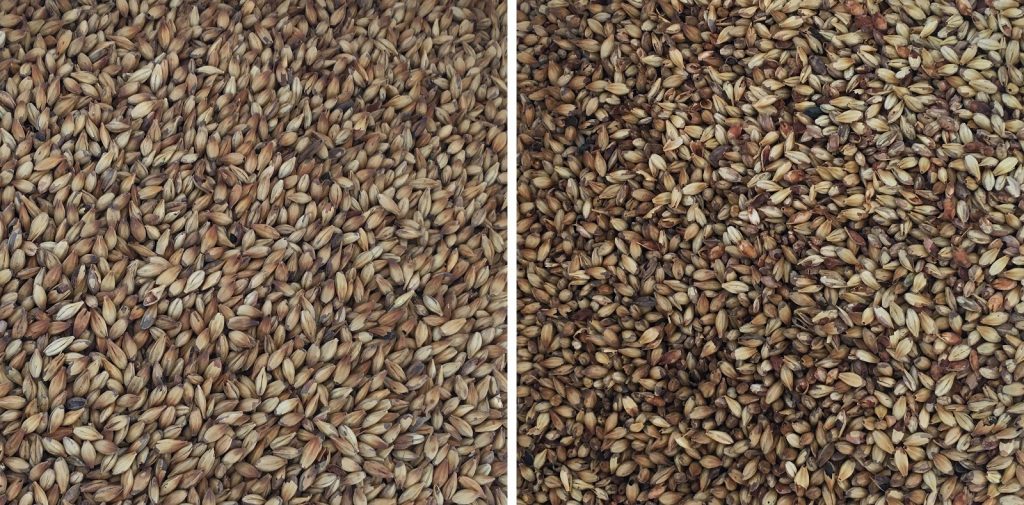
The following morning, while the water was heating, I milled the grains.
Since this brew day required 2 mashes, I started the C60 mash about 30 minutes before starting the batch with the crystal blend. Confirming consistent process, both hit my target mash temperature.
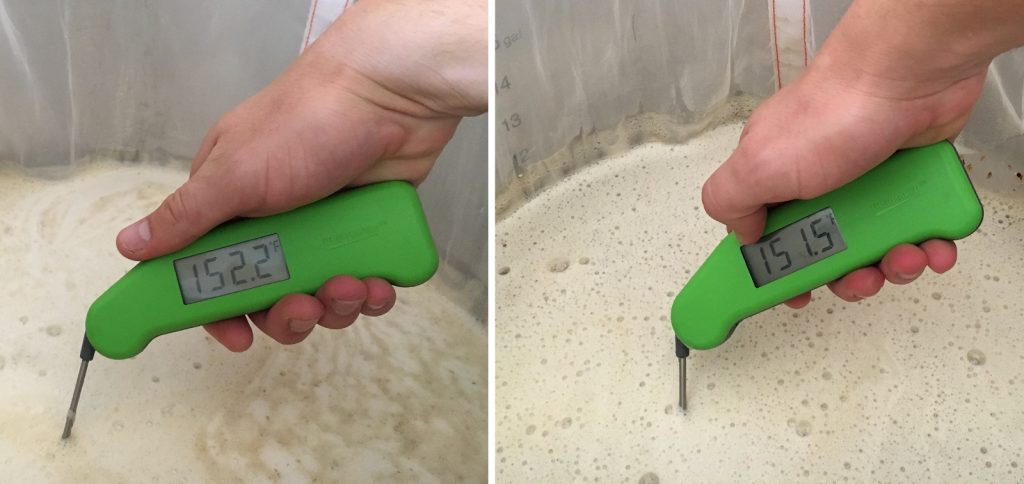
At the completion of each 60 minute mash rest, I removed the grains and allowed them to drip into the kettle as the wort was being heated.
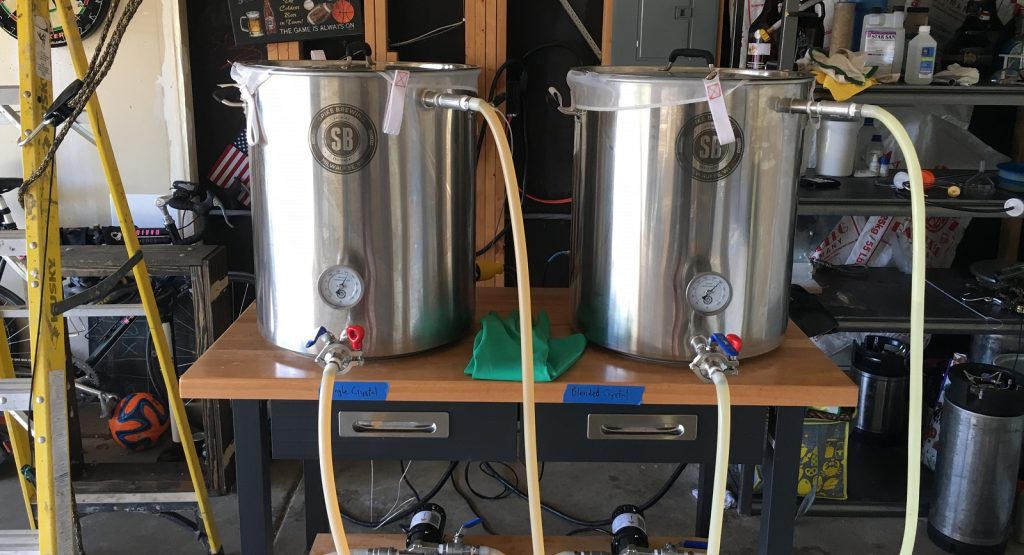
Each batch was boiled for 60 minutes with hops added as noted in the recipe..
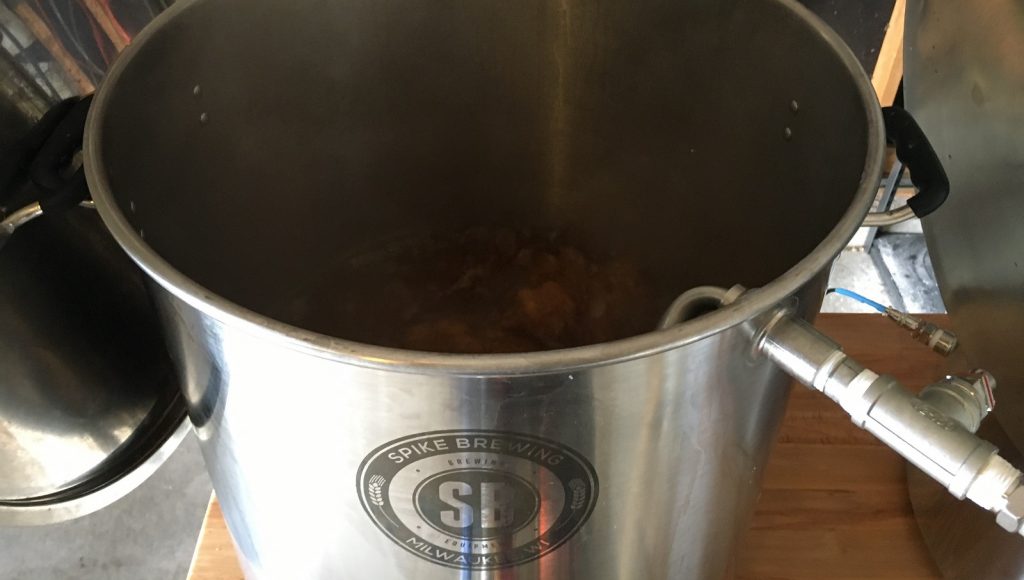
After the boils were complete, the worts were quickly chilled to slightly warmer than my groundwater temperature.
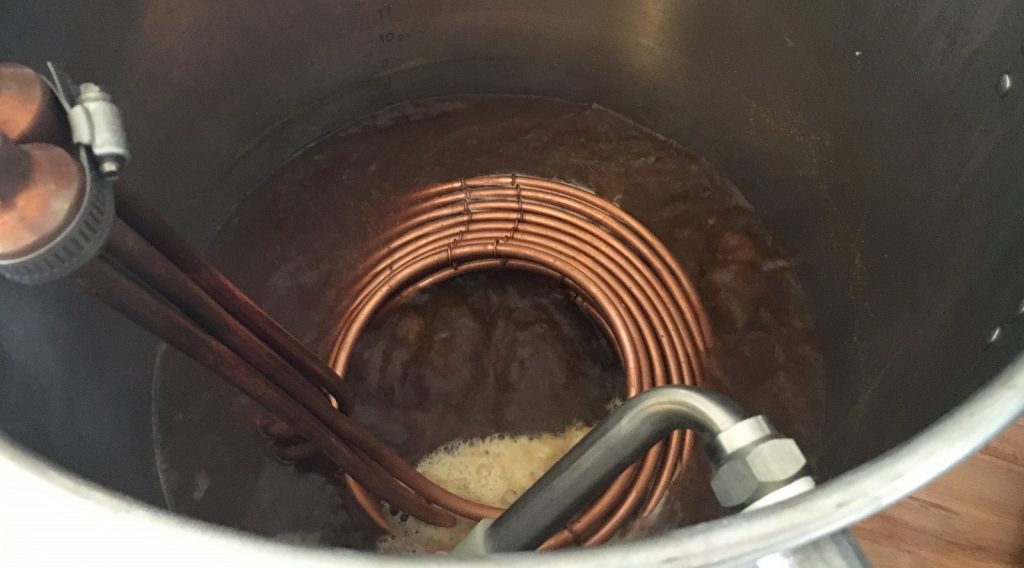
After racking the chilled wort to fermentors and placing them in a fermentation chamber to finish chilling, I took hydrometer measurements showing each had hit the same target OG.
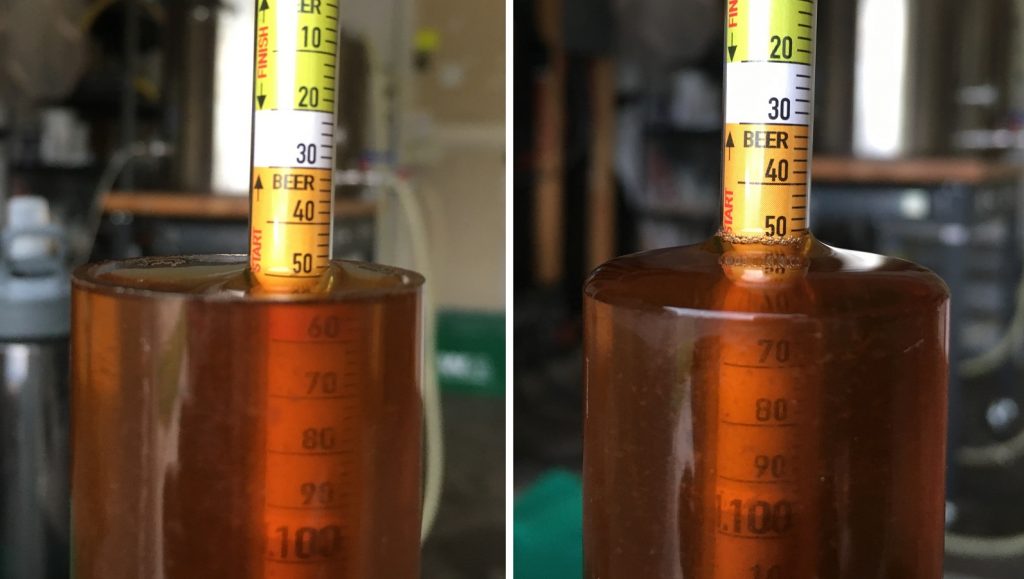
The color of each beer was similar enough to validate my confidence in BeerSmith’s SRM prediction.
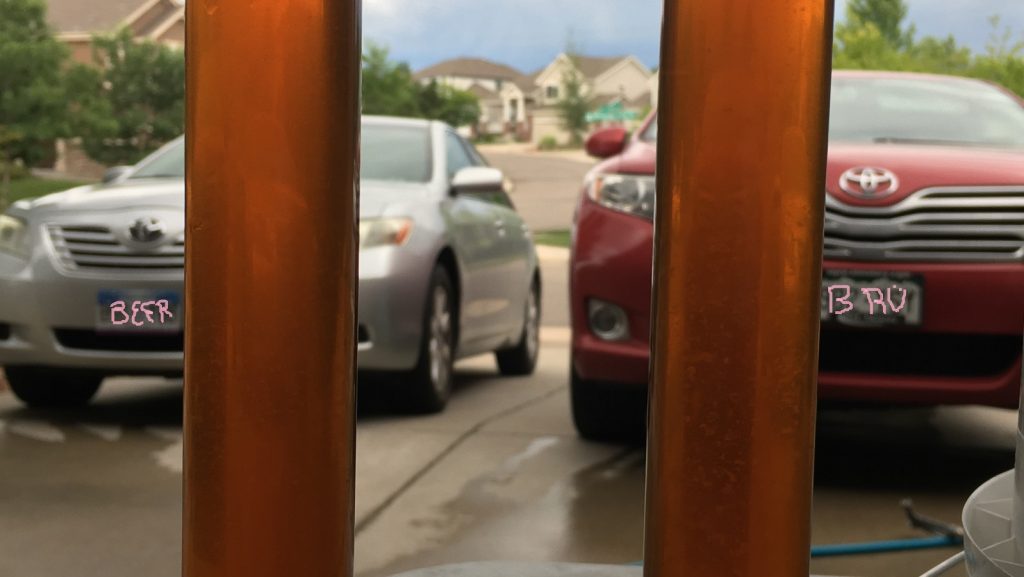
I used some remnant wort to whip up a vitality starter, which I pitched 4 hours later when both worts were stabilized at my target 66°F/19°C fermentation temperature.
I observed both batches actively fermenting 12 hours later.
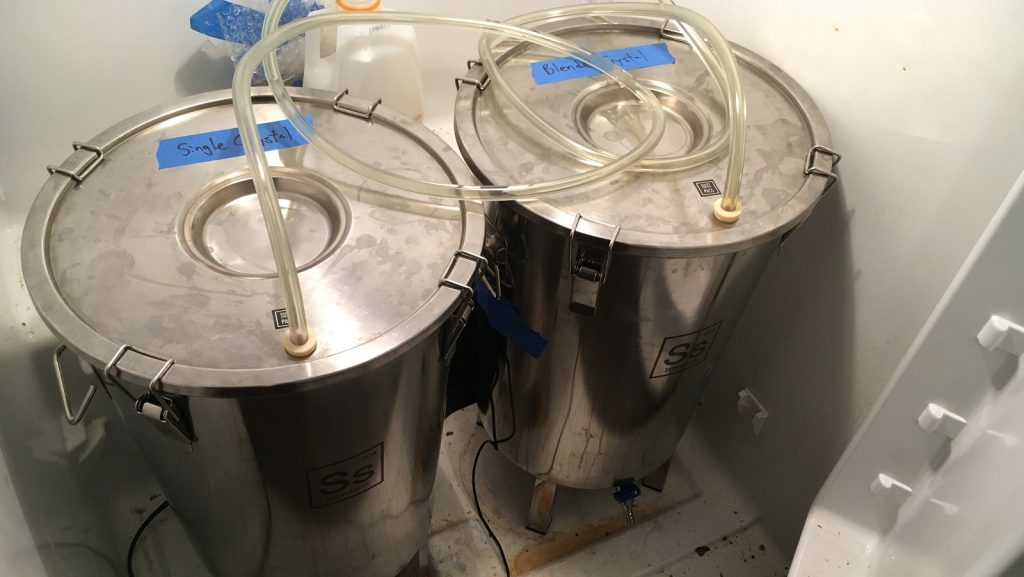
Noticing dwindling activity 4 days later, I raised the temperature to encourage complete attenuation and clean-up of any potential off-flavors. After a couple more days, I took hydrometer measurements showing a small difference between the batches.
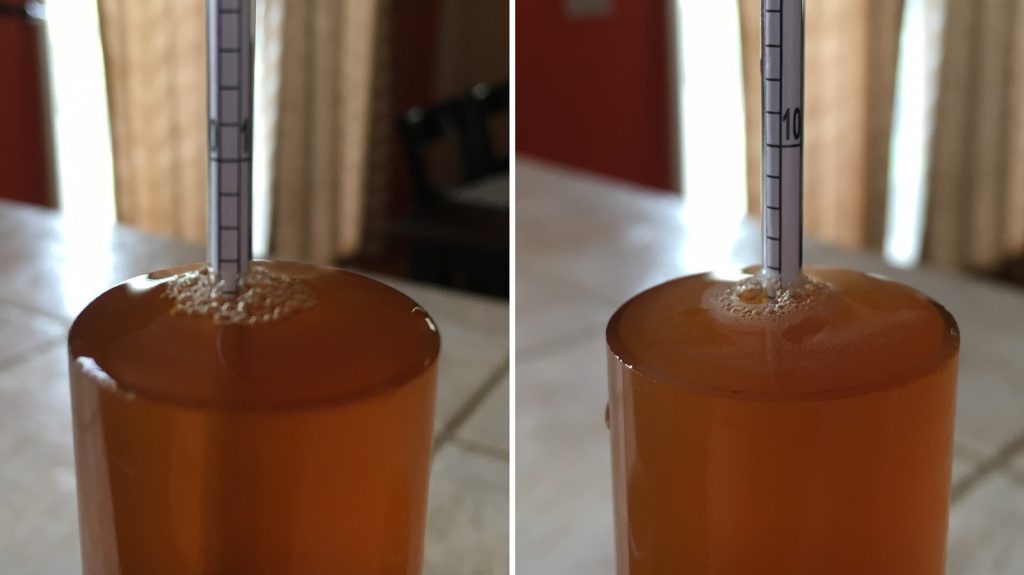
When follow-up hydrometer measurements a few days later were the same, I cold crashed the beer overnight then transferred them to kegs.
The filled kegs were placed in my keezer where they received a brief brief period of burst carbonation before I reduced the pressure. By data collection time, they were both clear, evenly carbonated, and ready to drink!
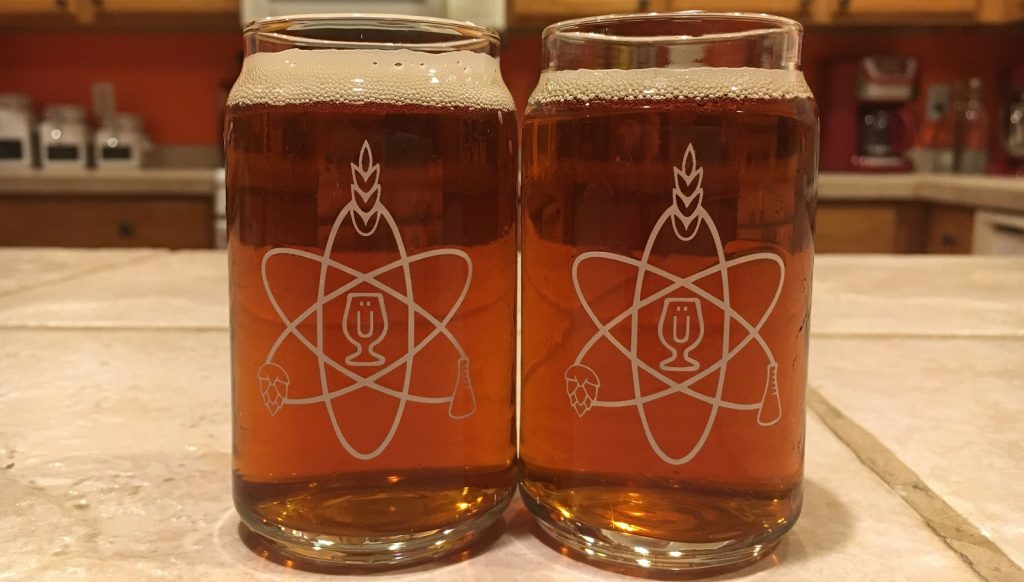
| RESULTS |
A total of 24 people of varying levels of experience participated in this xBmt. Each participant was served 2 samples of the C60 beer and 1 sample of the beer made using a blend of C100 and C20 then asked to identify the sample that was unique. Given the sample size, 13 tasters (p<0.05) would have had to select the unique sample to reach statistical significance. In the end, 15 people (p=0.003) correctly identified the odd-beer-out, indicating participants were able to reliably distinguish an English Bitter made with Crystal 60 form one made with the same amount of a blend of C100 and C20.
The participants who correctly selected the unique sample in the triangle test were instructed to complete a brief set of additional questions comparing only the two different beers, still blind to the nature of the xBmt. Of the 15 correct tasters, 5 chose the C60 beer as their most preferred, 6 liked the Crystal blend beer more, 1 person reported having no preference despite perceiving a difference, and 3 tasters felt there was no difference between the beers.
My Impressions: I was able to consistently identify the unique sample over numerous triangle test attempts. To me, the crystal blend beer possessed more of a dark fruit flavor while the C60 beer wasn’t as deep, which left me with a slight preference for the crystal blend sample. That said, for the purposes of this xBmt, I used way more Crystal malt in these beers than I normally would and likely wouldn’t do so again in a beer I brewed for enjoyment’s sake. They were both good, neither got dumped, just a little too Crystal-y for my tastes.
| DISCUSSION |
As I considered the practicality and applicability of this xBmt, I could only come up with two main reasons a brewer would opt for a blend of Crystal malts over a single Crystal malt, the first one being to substitute for a an unavailable ingredient. While tasters in this xBmt were indeed capable of distinguishing a beer made with C60 from the same beer made with a C100/C20 blend to achieve the same color, I believe the differences were subtle enough that such a substitution actually works quite well. Basically, I’d have little issue using a Crystal blend in place of a single Crystal malt, or vice versa, if it meant I didn’t have to place an order or drive to my local shop.
The second reason I could think of that a brewing would blend Crystal malts is to increase the complexity of a beer, something often cited by experienced brewers as a pitfall of entry level brewers. While I’ve been known to regurgitate the merits of simple grain bills, the results of this xBmt served to remind that layering various grains can help some achieve a desired goal. The fact is, I preferred the beer made with the Crystal blend a little more than the one made with C60 alone, which I didn’t expect to be the case.
Overall, this xBmt motivated me to play around with different grain combinations, not just Crystal malts, but base and specialty as well. Is it possible, for example, to achieve Maris Otter character using a blend of Pale and Munich malts? I look forward to finding out!
If you have thoughts about this xBmt, please share them in the comments section below!
Support Brülosophy In Style!
All designs are available in various colors and sizes on Amazon!
Follow Brülosophy on:
FACEBOOK | TWITTER | INSTAGRAM
If you enjoy this stuff and feel compelled to support Brulosophy.com, please check out the Support Us page for details on how you can very easily do so. Thanks!

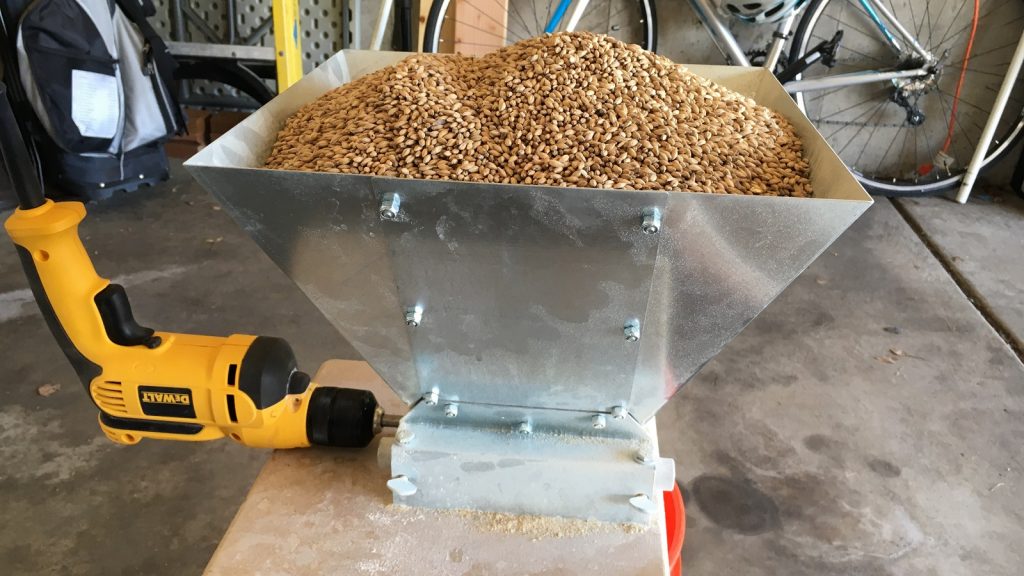
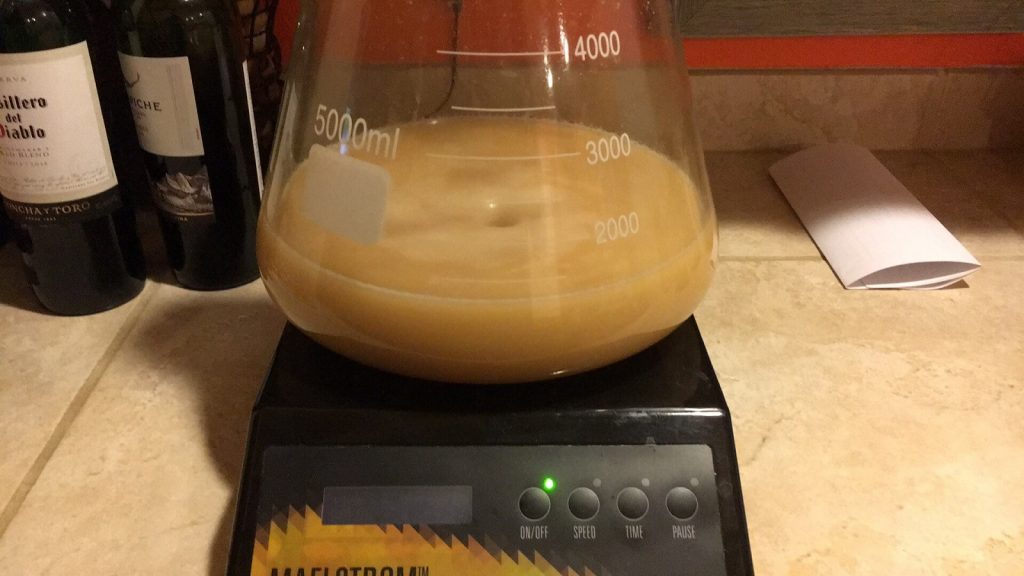
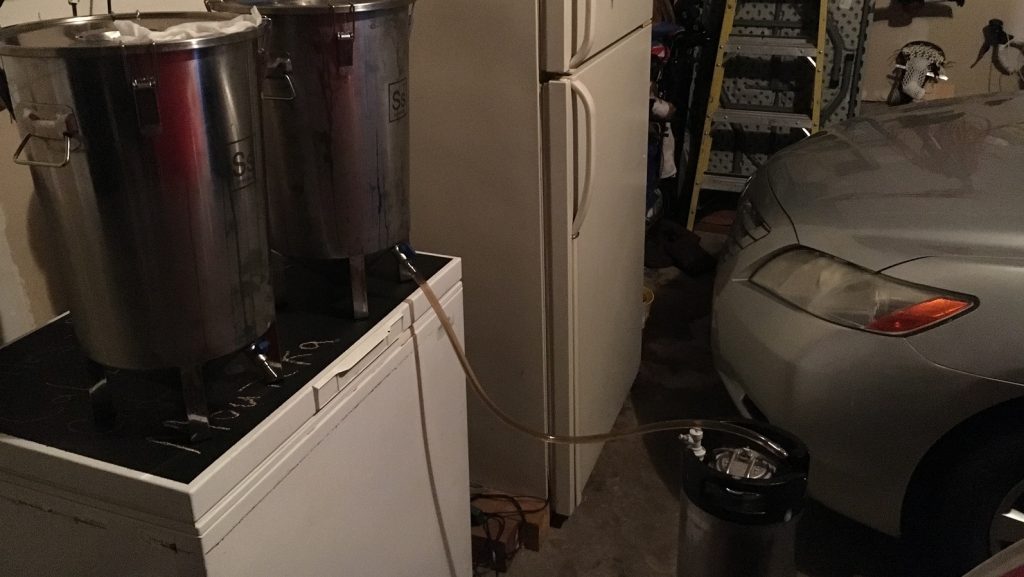










20 thoughts on “exBEERiment | Grain Comparison: Crystal 60 vs. Crystal 100/20 Blend In A Strong Bitter”
Great experiment guys! I just did something similar to this last week. Great to know it’s gunna be alright 🙂
Another interesting read.
As an aside, I often see ESB referred to as a British beer style on American brewing websites, but there’s actually no such style here in the UK. ESB is the name of one brand of beer (Fuller’s ESB), and calling it a style of beer is a bit like calling SNPA (Sierra Nevada Pale Ale) a style of beer. However, the terminology is now so widespread that it’s probably fair to say ESB has become a legitimate American beer style – just don’t call it British!
The BJCP guidelines echo this exact point…I think it’s a little like a lot of people calling tissue paper ‘Kleenex’. I wouldn’t say the ESB is a separate American beer style though, it’s just a semantic issue/mistake.
It’s British, extra special bitter, aka premium bitter, highest strength of all the bitters (english pale ale)
Trademarked by Fuller’s, it’s gotta be BRITISH!
ESB is a beer which defines a style. Probably my favorite example of the style tbh. Last time I went to an English pub and ordered a bitter (San Francisco, McGarry’s) I was corrected when ordering a “bitter.” “Call it a fullers……it’s FULLERS” haha
As a style it doesn’t exist over here – 5.9% is very much an outlier for bitters. Standard British bitters are about 3.8%, bests and specials 4-4.5, IPA around the same. There isn’t really an equivalent style at 5.9% strength – only in the US and Canada.
I don’t think that’s true at all. ESB is a sub style of English bitters. I.e. a bitter which is higher strength and darker than a standard bitter. The way I see it “bitter” is a broad term encompassing a spectrum within a style. I know Fullers trademarked it, but there are plenty other examples out there.
I’m British but the way as well.
Great exbeeriment!!!
Nice experiment! I always wondered about how different beers with the same SRM and FG would be when brewed with different malt bills. I wish I had a way of sampling beers brewed with all different kinds of malt to see what the malts really taste like.
Marshall, which % of crystal you use for enjoyment´s sake?
How’d you like the Challengers? Just bottled a British golden ale with Challenger hops and Thames yeast, but I haven’t made my mind up yet.
Challenger is a great English hop, especially for bittering. I get notes of tea and white chocolate from it. It goes great with EKG’s.
Save those beers, and run the test again in 3 months. Maltsters, in particular Briess, have said that C60 is the LEAST long term stable caramel malt for finished beer. If you’re looking for longer shelf life they recommend using a blend to lighter and darker, and staying away from the middle of the range. I don’t offhand remember the technical details, but a chemist from Briess presented the data at NHC some years ago, so it might be on the AHA website (though I suspect it’s too far back to have been recorded like they do now.)
Rob
What kind of drill are you using? Does it have a speed setting or are you just fine controlling the trigger?
I find that as you get to the darker Crystal malts you need a lot less for a similar flavor impact. It sounds like the C120 took over in the blend beer. I enjoy that raisin/fig from the extra dark crystal malts, but you need a light touch. I typically use 4-6 ounces (tops) in a 3-gallon batch of ESB.
If you need to sub a Crystal malt, I think you are better off going with the closest lighter color you can find, and then making up the color difference with something like Sinamar, Midnight Wheat, Brewers Caramel, etc., rather than using a blend of Crystal malts.
This was my thought as well. I found the conclusion on complexity and blending crystal malts to be a bit of a non sequitur. It could be that blending C20 and C100 in itself provided more complexity, but I suspect you would get very similar results by using Maris Otter and C100 only, in proper quantities.
There always seems to be that one dude that “although they perceived a difference, had no preference at all”. I say we stop giving Mr Meh any more beers!
I always struggle to understand when you get a statistical significance and then when asked of these folks for preference you get a response such as this 3 decide there is no difference! Doesn’t this then invalidate their initial response as mere guess? And you end with just 12 that I’d correctly and not significant?
I totally agree that one should not use too much crystal, instead using other malts to round it out. I have noticed a difference in using a blend of crystal, like 80/20 vs 60. Like the author, we prefer the blend.
My results could be confounded, though, as the 80 is a Belgium crystal, whereas the c60 is a North American one(Great Western).